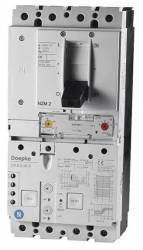Doepke DFL8 160-4/X-B SK - DOEP DFL8 160 4/XB SK FI security tools DFL8 4 pole
Installation > Modular devices / equipment installation > RCD

Doepke DFL8 160-4/X-B SK - DOEP DFL8 160 4/XB SK FI security tools DFL8 4 pole
| Lieske Part No. | 910194 |
|---|---|
| Mfg Part No | 09189784 |
| EAN-Code | 4014712153561 |
| Manufacturer | Doepke |
| Here only | 3.546,28 EUR
4.220,07 EUR incl. VAT
|
Further information for Doepke DFL8 160-4/X-B SK - DOEP DFL8 160 4/XB SK FI security tools DFL8 4 pole
CBR (Circuit-Breakers with Integral Residual Current Protection) are circuit breakers with a magnetic and thermal overcurrent release and a residual current release. The circuit breaker with residual current protection is used for overcurrent protection of equipment, cables and lines in accordance with DIN VDE 0100-430 and for protection against electric shock by automatically switching off the power supply in accordance with DIN VDE 0100-410. This series consists of compact devices for rated currents of up to 250 A with an integrated auxiliary switch and connection terminals for large cable cross-sections. The devices are preferably mounted on a mounting plate. Universal current-sensitive switches with residual current characteristic B detect smooth DC residual currents as well as all other residual currents of type B in a frequency range of up to 100 kHz. The evaluation unit integrated for this requires an operating voltage that is taken from the mains voltage. The correct voltage supply is guaranteed if there is a minimum voltage of 50 V between just two current paths. The detection of type A residual currents (alternating and pulsating direct residual currents) that is completely independent of the mains voltage ensures protection even if only one active conductor carries voltage to earth and has an earth fault. For switches with the SK characteristic curve, the frequency response of the tripping current is designed so that residual currents with high frequencies, e.g. in the range of the clock frequencies of alternating and frequency converters compared to the rated frequency, are detected with significantly reduced sensitivity. This largely prevents unwanted tripping due to leakage currents. However, depending on the rated residual current of the switch (0.03 A, 0.1 A or 0.3 A), fire protection is only provided for residual currents with frequencies up to 1000 Hz, 300 Hz or 100 Hz, while devices with the NK tripping frequency response offer this protection level over the entire tripping frequency range up to 20 kHz or 100 kHz. With switches of this variant, the fault response current can be individually set in stages to suit the respective application (0.30 A, 0.50 A, 1.00 A). The non-response time limit can also be set in stages accordingly. This makes it possible to implement a selective residual current protection circuit in systems with staggered distributions. Standard devices are designed to monitor circuits with a rated voltage of 230 V or 400 V and a rated frequency of 50 Hz. Features: - adjustable rated residual current, - range of types with rated currents from 100 A to 250 A, - rated voltage 230 V, 400 V AC, - four-pole, - residual current detection for smooth direct current as well as alternating and pulsating direct currents, - high tolerance to fluctuations in the auxiliary voltage when detecting type B residual currents,- mains and auxiliary voltage independent tripping in case of type A fault currents and overcurrent, - high short-circuit switching capacity, - connection terminals up to 185 sqmm, - thresholds for instantaneous and delayed overcurrent tripping adjustable, - high surge current strength, i.e. low tendency to false tripping due to transient fault currents, - auxiliary switch integrated, type of installation: - attachment to mounting plate, - installation position as desired, - feed from below, areas of application: - staggered power supply systems with TN-S, TT and TN-CS networks with high short-circuit power in commercial buildings and industry, - in IT networks, the residual current tripping of the CBR can be provided for shutdown in the event of a second earth fault., - due to its universal current sensitive residual current tripping, this universal current sensitive CBR is particularly suitable for protecting systems with electronic equipment that is not galvanically isolated from the mains on the input side., - use for residual current protection in

This is an offer of:
79279 Vörstetten
http://industry-electronics.com
Tel. 07666/88499-0
Fax. 07666/88499-111
Diesen Artikel finden Sie unter:
industry-electronics.com/artikel/910194

Lieske Elektronik e.K.
Reutener Str. 1079279 Vörstetten
http://industry-electronics.com
Tel. 07666/88499-0
Fax. 07666/88499-111
Diesen Artikel finden Sie unter:
industry-electronics.com/artikel/910194
